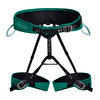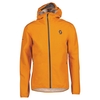Beyond the Face, characters of climbing by Heiko Wilhelm

 1 / 12
1 / 12 @ Heiko Wilhelm
@ Heiko Wilhelm
After more than two years of painstaking work, last May Austrian climbing team coach Heiko Wilhelm published his book Beyond the Face, characters of climbing. Produced together with Ben Lepesant, Elias Holzknecht and Stewart Watson, this detailed look at competition climbing retraces the lives of 39 athletes who have helped shape this sport over the last 30 years. The core of the book is comprised of these in-depth interviews that delve into climbing, training, the strains, pains and joys of competitions, and is accompanied by stunning action and portrait photographs as well as a nigh endless number statistics.
Heiko, what general idea does this book provide about the characters of climbing?
The idea behind the book is so much more than just facts and numbers. We wanted to show the other side these characters, get them to share their stories.
39 interviews, thousands of tiny details… this must have been painstaking work. Where did the idea come from?
Thank you! I got the idea for the book a few years ago. As you know I’ve always taken photos during every single World Cup, and in 2007 I started to create an annual review for the Austrian Climbing Federation with some of the best moments of the season, in both pictures and words. That’s how the idea came about. What’s more, I was worried that so many interesting climbers would be forgotten about when they retire from competitions, and that soon it would be difficult to retrace the history of international competitions. That’s what motivated me to start this project.
With others
Yes, the team was very important, I would never have been able to produce something like this alone. Elias Holzknecht is a great photographer and his portraits and stunning action pictures are invaluable. Ben Lepesant and Stewart Watson breathed life into the interviews I made and wrote the interesting portraits. Last but not least, Thomas Schrott created the great design.
What was the best bit?
I already knew most of the climbers I interviewed pretty well. But getting the chance to have long, personal conversations with all these interesting people was really meaningful.
So what was most difficult thing in compiling this volume?
Selecting the climbers I wanted for the interviews, doing some of the interviews and then actually finishing the book!
What criteria did you use in choosing who to interview?
The first list included over a hundred climbers - this was simply impossible. So I tried to make a good selection from these, and also include climbers who significantly influenced this sport.
Out of interest, how did the climbers react to the interviews?
Many were happy to do them, but some also got nervous, perhaps because I told them them how important it was to capture some of their more profound thoughts and feelings.
What or who surprised you most, and why?
In general, what struck me most is that that all these climbers are addicted to climbing. Climbing is the center of their lives. And I was also struck by the wide variety of different cultures and backgrounds. What stands out were the Russians, with their very direct way of putting things and their interesting stories.
You’ve been in a unique position ever since 2007 to observe climbing competitions. How have they, and the climbers, changed since then?
Competition climbing has developed immensely during the last three decades. Competitions are increasingly becoming events in their own rights, providing a mix of spectacle and and sporting achievements. Back in the day, small holds and finger pockets decorated the competition walls. Today we have powerful routes, aesthetic setting and a time limit for climbing, to provide a better show and an attractive style of climbing for the athletes. Bouldering has become more creative, offering increasingly complex movements and dynamic sequences. Training has developed, become more structured based on scientific principles. The infrastructure has evolved significantly. So nowadays we have far more strong climbers all over the world than 30 years ago. Climbing is popular, it’s a lifestyle and viewed as something that is cool. For some people though climbing might increasingly transform into a fitness-sport, where lifestyle becomes secondary and the climbing is all about training and numbers. If this happens then the core, the soul of climbing, may slowly fade away.
Any views about the Olympic dream?
It is of critical importance that the decision-makers act sensitively to the fundamentals of this sport. Competitions must not deviate from the underlying values and ethos of climbing. Only this way can competition climbing continue as a great experience for the spectators, participants, officials, organisers and coaches. An experience as enriching as it is today, namely spectacular, friendly, varied, exciting, emotional and rousing. If our sport keeps this value the Olympic games are definitely a great chance.
Heiko last question - having interviewed all these climbers, what must an athlete have to be successful?
Hard to say, but definitely an iron will, a love for climbing and consistency.
INFO: www.beyond-the-face.com
Sachi Amma – On A Journey Of Discovery
Christian Core – The Quiet Powerhouse
Shauna Coxsey – The Learning Process
Romain Desgranges – Logical Progression
Sasha DiGiulian – A Climbing Education
Charlotte Durif – Prodigal Daughter
Angela Eiter – Every Love Story Is A Ghost Story
Robyn Erbesfield - Raboutou – Built For A Champion
Johanna Ernst – Growing Up
Kilian Fischhuber – The King
Rustam Gelmanov – From Tekelin To Rotterdam
Guillaume Glairon Mondet – Enfant Terrible
Lynn Hill – Climbing’s First Lady
Yuji Hirayama – The Stonerider
Jan Hojer – The German Powerhouse
James Kassay – Following A Passion
Jain Kim – A Fine Balance
David Lama – Stepping Across
François Legrand – Monsier Zebig
Mina Markovic – Work Hard, Play Hard
Sean McColl – Methodical, Decisive, Motivated
Magnus Midtbo – Enter The Viking
Jerry Moffatt – The Ace
Gabriele Moroni – Passion Perseveres
Mélissa Le Nevé – Living In The Present
Akiyo Noguchi – Going On An Adventure
Adam Ondra – The Wizard
Alex Puccio – Gym Rat … Not!
Ramon Julian Puigblanque – The Reticent Man
Muriel Sarkany – The Dragon
Jakob Schubert – Committed
Dmitrii Sharafutdinov – The Russian
Chris Sharma – The Dude
Anna Stöhr – The Best Climber Is The One Having The Most Fun
Patxi Usobiaga – Learning How To Surf The Wave
Jorg Verhoeven – Climbing To Explore
Maja Vidmar – When Climbing Becomes Life
Daniel Woods – Pushing The Limit
Juliane Wurm – Suddenly Famous And Still Smiling
| www | |
| www.beyond-the-face.com | |



 Copia link
Copia link
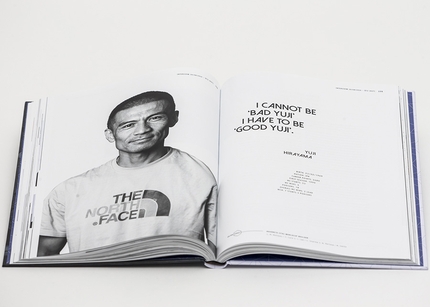
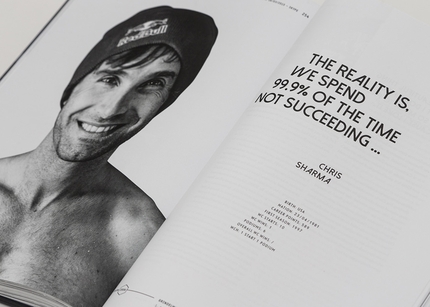
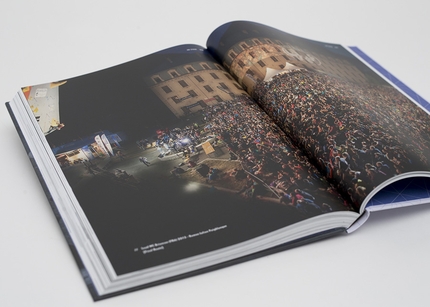
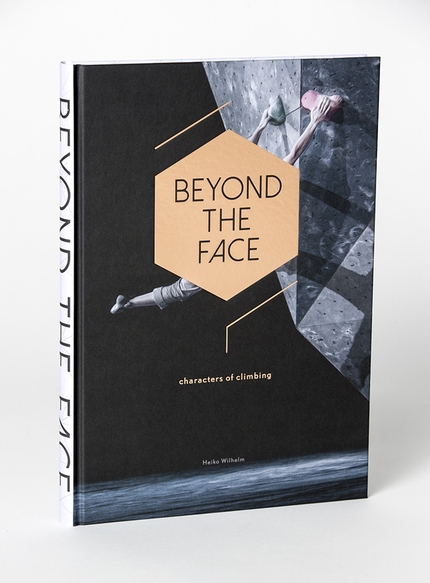
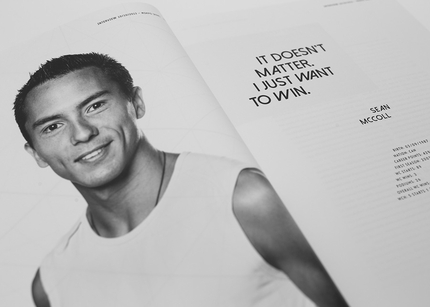
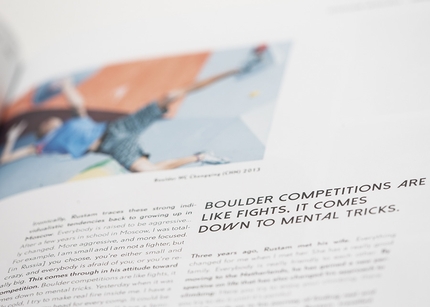
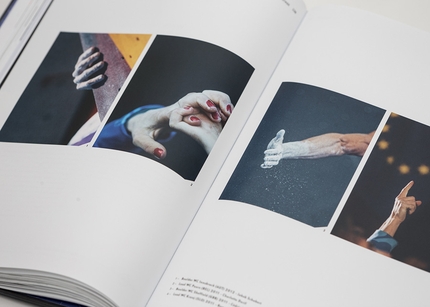
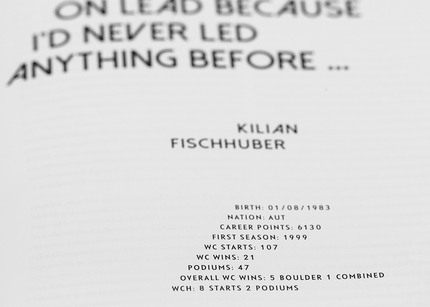
 See all photos
See all photos











